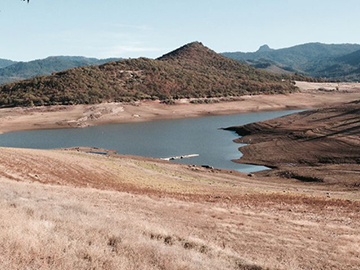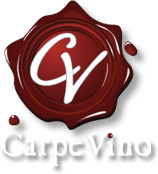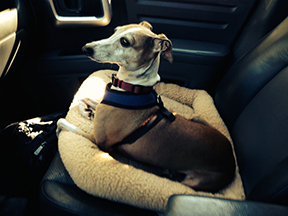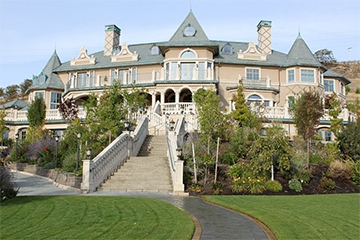We’re on the Vintage Highway in Southern Oregon

Emigrant Lake where we stayed near Ashland is actually a puddle, evidence of the serious nature of the drought in Oregon.
October 6, 2014: After months of procrastinating about embarking on a trek to southern Oregon’s nascent wine region, I’ve been here for a week now and I don’t want to go home. I’ve decamped to Emigrant Lake—actually a puddle after our prolonged drought—the centerpiece of a bucolic Jackson County park adjacent to Ashland’s southern edge.
For a long time now, I’ve been aware of the fact that wine is vinted here, but I never bothered to stop on trips to the Willamette Valley at the top of the state. But then a story in the travel section of the Sunday New York Times back in July piqued my interest. The piece depicted this place as a throwback to the Napa of the 70s: small, family-owned wineries on back roads before tasting fees were invented. Quaint on steroids.
All of that is certainly true, and while the region has received more hype from a Sunset magazine one-page primer, it is still very much in its infancy. Southern Oregon compared to Willamette Valley is equivalent to El Dorado County vs. the Napa Valley. Both AVAs produce wine, but. . .
I planned on staying for no more than four nights before heading up to Bend for a three-day look-see. Extending for the second time, however, I’ll have been parked in space #7 for six nights. My 1958 DeVille is, by a wide margin, the smallest and most basic mobile shelter here (15 feet and no bathroom). But after digging in, my dog, Moose, and I are quite comfortable with all the comforts we need (except high-speed Internet access).
So what’s the draw here, beyond the wine? Well, pretty much everything else. The Ashland area delivers the best of all worlds thanks to the presence of Southern Oregon University and the Oregon Shakespeare Festival. You want culture, you’ve got it here, plus no shortage of wonderful restaurants that prove conclusively Sacramento has no exclusive when it comes to farm-to-fork prowess.
A series of valleys bisected by I-5 comprise the prime vineyard locations and wine-making operations, five all told: Umpqua Valley to the north and Applegate Valley to the south, with Illinois Valley, Rogue Valley and Upper Rogue sandwiched in-between. No doubt this diversity is what ails the region in terms of branding: disparate pockets struggling to create a common, plausible identity. . .complicated by multiple associations and predictable infighting. Given time, I suspect, they’ll either figure it out or die.
My reason for coming here was to find new wines to introduce in Carpe Vino—I expected to encounter low-production, value wines that would be virtually unknown in our part of the world. After my first few winery visits, however, my hopes were dashed for one crucial reason: although some wineries were willing to sell direct, none has a licensed distributor in California. Add the cost of shipping to wholesale discounts that were on par with what the wineries offer to their wine club members, and the costs are just out of whack with the quality of the wine.
It would be unfair to characterize an entire region based on my perception of quality, but there is a consistent dynamic that does have a measurable impact. And that is a large percentage of winery owners here started out as farmers—some producing pears and/or peaches; others were pure vineyard operators. Many segued into winemaking through custom crushes using a handful of winemakers. The result is a sameness to many wines and the quality—even within a single winery—can be all over the map. There is a dearth of individual winery styles. . .there are few collections exhibiting a connectedness.
Simply put, the wines are generally okay, though I encountered some wonderful examples of whites—chenin blanc, sauvignon blanc and vigonier. Red varieties that flourish in toasty climates—such as Rhones and tempranillo—can be found here as well. Oddly enough, I noticed a high number of older vintages being poured in tasting rooms. . .one dating back to 2003, but lots of ‘05s and ‘06s.
More and more professional, full-time winemakers are being hired by wineries, though, and as their work comes online over the next few years, there are other attractions: specifically places and people. This is one of the most beautiful spots on the planet if you are partial to rolling hills, roiling creeks and open land that is home to cattle raising, orchards and all manner of truck farms.
The winery folk are uniformly engaging and welcoming. They are honest, too, and acknowledge the problems that need to be solved, while pointing to successes. One of these is southern Oregon’s annual World of Wine competition. This year’s five-day event drew 200 wines from 50 local wineries and featured three imported judges: two master sommeliers and Mike Dunne, the former wine and restaurant critic for the Sacramento Bee who still contributes frequently to the newspaper.
It’s tough to ferret out the best wineries because they are located across a wide area and there is no contiguous trail. I visited roughly 10, and the place I enjoyed most was EdenVale, just outside of Medford. The centerpiece of the estate is a beautifully restored farmhouse—more accurately a manor home—with an adjacent carriage house cum tasting room. The place is totally green, with a tree-lined driveway and formal gardens surrounding the buildings.
I particularly enjoyed three red wines: a 2005 Reserve Claret (cab franc, merlot and cabernet sauvignon), $25; a 2007 Syrah-Merlot, $20; and a 2007 Reserve Merlot, $32, that earned 99 points and double gold at the 2014 San Francisco International Wine Competition. That’s a big deal!
Two other wineries with excellent programs were Ledger David in Central Point and Pebblestone Cellars outside of Medford. Not to be missed is Belle Fiore, just beyond the Ashland airport. . .not necessarily because of the wine. . .the place is the big draw. An allergy doctor who created Flonase owns the winery (or so I was told in the tasting room of the “Chateau” the owner’s 19,000-square foot residence overlooking estate, winery building and entire valley. This tasting room is open to the public only on Fridays from 2 to 5 p.m., so I guess I got lucky!). The 20,000 square-foot winery building is the most lavish winery facility I have ever seen: two story-tasting room with a wooden domed ceiling; expensive woodwork everywhere; restaurant, wine bar, function rooms and a football-sized, multi-level patio. If you visit Ashland, you absolutely have to visit this joint. . .
I am a sucker for college towns, and no doubt that is one reason why I’m reticent to leave this place. It is an engaging place to hang out, though Main Street is way too noisy for my ears. It is Rte. 99 and was the main passage through the valley before the freeway was constructed.
One box I was able to check here was attending a play, though what I saw wasn’t written by Shakespeare. . .no, I saw Irving Berlin’s musical, Cocoanuts, featuring the Marx Brothers. . .Groucho, Harpo and Leonard. This is what you would imagine a Broadway theatre would deliver. Lots of accomplished dancers, complicated choreography, visually exciting sets and a cast that spewed rapid-fire comedy clichés with ease. The talented actors who portrayed the Marx boys were absolutely spot on. One problem: I was exactly one minute tardy so I was barred from my fifth-row seat and spent the first half of the play on a jump seat in the last row of the theater.
Many readers may be aware that I have recently returned to bike riding (of the pedal variety, not motorized) and I brought mine along to tackle the 18-mile Bear Creek bike trail that runs from Ashland to beyond Medford. Sitting in a coffee shop after pedaling to Medford, I consulted my map and I decided to ride six miles to a Jacksonville, an absolute clone of Sutter Creek where I had lunch the day before (very nice at the historic Jacksonville Inn!).
The route was rated “steep,” but amazingly enough I handled it without difficulty. I had a quick bite in Jacksonville and jumped on Stage Road South and reconnected with the bike trail in about 12 miles. I’ll readily admit to running low on juice at about the 30-mile mark, but I made it back to the car. Stats: 37 miles, in 2 hours, 49 minutes. That’s 12.6 mph, approaching my goal of averaging 13 miles per hour.
After I finish writing this edition of WOOT, Moose and I are headed back to the trailer for lunch and then on to the park for a little weight training (I brought two kettle bells) and I hike. Tomorrow morning our tour continues four hours north in Bend, and a place I really want to visit and maybe even play pickleball. I’m hoping to be back in Auburn on Saturday evening (October 11).
But don’t bet on it!


